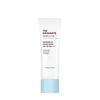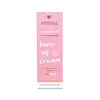What's inside
What's inside
 Key Ingredients
Key Ingredients

 Benefits
Benefits

 Concerns
Concerns

 Ingredients Side-by-side
Ingredients Side-by-side

Water
Skin ConditioningEthylhexyl Methoxycinnamate
UV AbsorberOctocrylene
UV AbsorberEthylhexyl Salicylate
UV AbsorberIsododecane
EmollientSilica
AbrasiveGlycerin
HumectantPropylene Glycol
HumectantPentylene Glycol
Skin ConditioningBis-Ethylhexyloxyphenol Methoxyphenyl Triazine
Skin ConditioningCetyl Alcohol
EmollientPhenoxyethanol
PreservativePolymethylsilsesquioxane
Niacinamide
SmoothingPolysorbate 80
EmulsifyingPanthenol
Skin ConditioningTremella Fuciformis Polysaccharide
Emulsion StabilisingEthylhexylglycerin
Skin ConditioningDisodium EDTA
Zinc Oxide
Cosmetic ColorantSodium Hyaluronate
HumectantButylene Glycol
Humectant3-O-Ethyl Ascorbic Acid
Skin ConditioningCaprylic/Capric Triglyceride
MaskingAvena Sativa Straw Extract
Skin ConditioningArtemisia Argyi Leaf Extract
Skin ConditioningHydrogenated Lecithin
EmulsifyingBehenyl Alcohol
EmollientOctyldodecanol
EmollientHydroxyacetophenone
AntioxidantCeramide NP
Skin ConditioningCeramide AP
Skin ConditioningCeramide Ns
Skin ConditioningCeramide Ng
Skin ConditioningHyaluronic Acid
HumectantRetinol
Skin ConditioningWater, Ethylhexyl Methoxycinnamate, Octocrylene, Ethylhexyl Salicylate, Isododecane, Silica, Glycerin, Propylene Glycol, Pentylene Glycol, Bis-Ethylhexyloxyphenol Methoxyphenyl Triazine, Cetyl Alcohol, Phenoxyethanol, Polymethylsilsesquioxane, Niacinamide, Polysorbate 80, Panthenol, Tremella Fuciformis Polysaccharide, Ethylhexylglycerin, Disodium EDTA, Zinc Oxide, Sodium Hyaluronate, Butylene Glycol, 3-O-Ethyl Ascorbic Acid, Caprylic/Capric Triglyceride, Avena Sativa Straw Extract, Artemisia Argyi Leaf Extract, Hydrogenated Lecithin, Behenyl Alcohol, Octyldodecanol, Hydroxyacetophenone, Ceramide NP, Ceramide AP, Ceramide Ns, Ceramide Ng, Hyaluronic Acid, Retinol
Water
Skin ConditioningTitanium Dioxide
Cosmetic ColorantEthylhexyl Methoxycinnamate
UV AbsorberNiacinamide
SmoothingPolymethyl Methacrylate
Propylene Glycol
HumectantDimethicone
EmollientStearic Acid
CleansingGlyceryl Stearate
EmollientPhenoxyethanol
Preservative4-Methylbenzylidene Camphor
UV AbsorberPolyacrylamide
Cetyl Alcohol
EmollientCyclopentasiloxane
EmollientPolymethylsilsesquioxane
PEG-100 Stearate
C13-14 Isoparaffin
EmollientButyl Methoxydibenzoylmethane
UV AbsorberAllantoin
Skin ConditioningPanthenol
Skin ConditioningTocopheryl Acetate
AntioxidantLaureth-7
EmulsifyingDisodium EDTA
Ethylhexylglycerin
Skin ConditioningButylene Glycol
HumectantTriethoxycaprylylsilane
Aluminum Hydroxide
EmollientDimethicone/Vinyl Dimethicone Crosspolymer
Skin ConditioningParfum
MaskingActinidia Polygama Fruit Extract
Skin ConditioningArbutin
AntioxidantCitric Acid
BufferingSodium Sulfite
PreservativeAcetyl Tyrosine
Skin ConditioningSaxifraga Sarmentosa Extract
Skin ConditioningPaeonia Suffruticosa Root Extract
Skin ProtectingAminopropyl Ascorbyl Phosphate
AntioxidantScutellaria Baicalensis Root Extract
AstringentGlutathione
PEG-40 Castor Oil
EmulsifyingTriethanolamine
BufferingHexylene Glycol
EmulsifyingAmmonium Acrylates Copolymer
CI 12490
Cosmetic ColorantWater, Titanium Dioxide, Ethylhexyl Methoxycinnamate, Niacinamide, Polymethyl Methacrylate, Propylene Glycol, Dimethicone, Stearic Acid, Glyceryl Stearate, Phenoxyethanol, 4-Methylbenzylidene Camphor, Polyacrylamide, Cetyl Alcohol, Cyclopentasiloxane, Polymethylsilsesquioxane, PEG-100 Stearate, C13-14 Isoparaffin, Butyl Methoxydibenzoylmethane, Allantoin, Panthenol, Tocopheryl Acetate, Laureth-7, Disodium EDTA, Ethylhexylglycerin, Butylene Glycol, Triethoxycaprylylsilane, Aluminum Hydroxide, Dimethicone/Vinyl Dimethicone Crosspolymer, Parfum, Actinidia Polygama Fruit Extract, Arbutin, Citric Acid, Sodium Sulfite, Acetyl Tyrosine, Saxifraga Sarmentosa Extract, Paeonia Suffruticosa Root Extract, Aminopropyl Ascorbyl Phosphate, Scutellaria Baicalensis Root Extract, Glutathione, PEG-40 Castor Oil, Triethanolamine, Hexylene Glycol, Ammonium Acrylates Copolymer, CI 12490
 Reviews
Reviews

Ingredients Explained
These ingredients are found in both products.
Ingredients higher up in an ingredient list are typically present in a larger amount.
Butylene Glycol (or BG) is used within cosmetic products for a few different reasons:
Overall, Butylene Glycol is a safe and well-rounded ingredient that works well with other ingredients.
Though this ingredient works well with most skin types, some people with sensitive skin may experience a reaction such as allergic rashes, closed comedones, or itchiness.
Learn more about Butylene GlycolCetyl Alcohol is a fatty alcohol. Fatty Alcohols are most often used as an emollient or to thicken a product.
Its main roles are:
Though it has "alcohol" in the name, it is not related to denatured alcohol or ethyl alcohol.
The FDA allows products labeled "alcohol-free" to have fatty alcohols.
Learn more about Cetyl AlcoholDisodium EDTA plays a role in making products more stable by aiding other preservatives.
It is a chelating agent, meaning it neutralizes metal ions that may be found in a product.
Disodium EDTA is a salt of edetic acid and is found to be safe in cosmetic ingredients.
Learn more about Disodium EDTAEthylhexyl Methoxycinnamate is an organic compound that provides UVB protection. It often goes by the more common name of octinoxate. It is created from methoxycinnamic acid and 2-ethylhexanol.
Ethylhexyl Methoxycinnamate absorbs UVB rays with wavelengths between 280-320 nm. UV absorbers protect your skin by using chemical reactions to convert UV rays into heat and energy.
UVB (290-320 nm) rays emit more energy than UVA rays. They are capable of damaging DNA, causing sunburns and are thought to be linked to skin cancer.
The state of Hawaii has banned sunscreens containing octinoxate due to its potential impact on coral reefs. More research is needed to bridge gaps in this research. The European Union allows higher levels of octinoxate in sunscreens than the US and Australia.
Ethylhexyl Methoxycinnamate is oil soluble. It is not stable and may lose efficacy when exposed to sunlight.
Learn more about Ethylhexyl MethoxycinnamateEthylhexylglycerin (we can't pronounce this either) is commonly used as a preservative and skin softener. It is derived from glyceryl.
You might see Ethylhexylglycerin often paired with other preservatives such as phenoxyethanol. Ethylhexylglycerin has been found to increase the effectiveness of these other preservatives.
Niacinamide is a multitasking form of vitamin B3 that strengthens the skin barrier, reduces pores and dark spots, regulates oil, and improves signs of aging.
And the best part? It's gentle and well-tolerated by most skin types, including sensitive and reactive skin.
You might have heard of "niacin flush", or the reddening of skin that causes itchiness. Niacinamide has not been found to cause this.
In very rare cases, some individuals may not be able to tolerate niacinamide at all or experience an allergic reaction to it.
If you are experiencing flaking, irritation, and dryness with this ingredient, be sure to double check all your products as this ingredient can be found in all categories of skincare.
When incorporating niacinamide into your routine, look out for concentration amounts. Typically, 5% niacinamide provides benefits such as fading dark spots. However, if you have sensitive skin, it is better to begin with a smaller concentration.
When you apply niacinamide to your skin, your body converts it into nicotinamide adenine dinucleotide (NAD). NAD is an essential coenzyme that is already found in your cells as "fuel" and powers countless biological processes.
In your skin, NAD helps repair cell damage, produce new healthy cells, support collagen production, strengthen the skin barrier, and fight environmental stressors (like UV and pollution).
Our natural NAD levels start to decline with age, leading to slower skin repair, visible aging, and a weaker skin barrier. By providing your skin niacinamide, you're recharging your skin's NAD levels. This leads to stronger, healthier, and younger looking skin.
Another name for vitamin B3 is nicotinamide. This vitamin is water-soluble and our bodies don't store it. We obtain Vitamin B3 from either food or skincare. Meat, fish, wheat, yeast, and leafy greens contain vitamin B3.
The type of niacinamide used in skincare is synthetically created.
Learn more about NiacinamidePanthenol is a common ingredient that helps hydrate and soothe the skin. It is found naturally in our skin and hair.
There are two forms of panthenol: D and L.
D-panthenol is also known as dexpanthenol. Most cosmetics use dexpanthenol or a mixture of D and L-panthenol.
Panthenol is famous due to its ability to go deeper into the skin's layers. Using this ingredient has numerous pros (and no cons):
Like hyaluronic acid, panthenol is a humectant. Humectants are able to bind and hold large amounts of water to keep skin hydrated.
This ingredient works well for wound healing. It works by increasing tissue in the wound and helps close open wounds.
Once oxidized, panthenol converts to pantothenic acid. Panthothenic acid is found in all living cells.
This ingredient is also referred to as pro-vitamin B5.
Learn more about PanthenolPhenoxyethanol is a preservative that has germicide, antimicrobial, and aromatic properties. Studies show that phenoxyethanol can prevent microbial growth. By itself, it has a scent that is similar to that of a rose.
It's often used in formulations along with Caprylyl Glycol to preserve the shelf life of products.
Polymethylsilsesquioxane is a silicone used as a film forming agent.
When applied to the skin, this ingredient creates an invisible film on the surface. This film still allows oxygen to pass through, but prevents moisture from escaping. This can help condition and hydrate the skin. It also leaves a silky feel when applied.
Polymethylsilsesquioxane has not been shown to clog pores. It has been deemed safe to use up to 55%, but most cosmetics use much less.
If you have concerns about using this ingredient, we recommend speaking with a professional.
Learn more about PolymethylsilsesquioxanePropylene Glycol is an odorless, colorless liquid. As a humectant, it helps skin retain moisture. It also aids in delivering active ingredients.
Another role of this ingredient is preventing a product from melting or freezing. Propylene glycol also adds antimicrobrial properties to a product, elongating product lifespan.
This ingredient is considered an organic alcohol and commonly added into both cosmetics and foods.
Those with sensitive skin or conditions may develop a rash when using this ingredient.
Learn more about Propylene GlycolWater. It's the most common cosmetic ingredient of all. You'll usually see it at the top of ingredient lists, meaning that it makes up the largest part of the product.
So why is it so popular? Water most often acts as a solvent - this means that it helps dissolve other ingredients into the formulation.
You'll also recognize water as that liquid we all need to stay alive. If you see this, drink a glass of water. Stay hydrated!
Learn more about Water